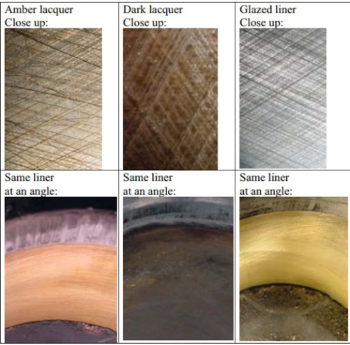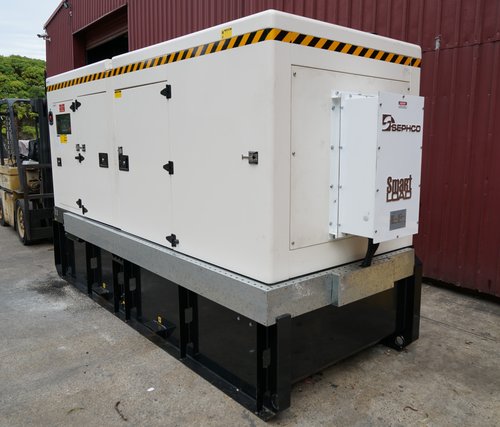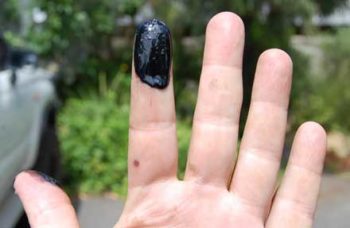Diesel Generator Set Underloading and its impacts.
INTRODUCTION
System condition and reliability are critical to backup and prime power applications for every facility, from mission critical data centers to home installations. A generator set is a key piece of the infrastructure, proper operation and maintenance are essential for long-term system reliability that ensures availability. All power systems are designed with a common a goal: To provide reliable power with maximum system efficiency. To achieve these design goals, it is important to understand the system operation, load profile and required maintenance. This article will focus on the operation of the generator set in low-load scenarios and what can result if they are used outside of these parameters.
GENERATOR SET RATED LOADS
It is important to understand that generator sets are designed to run and, to be 100% correct, they are designed to run with load. This may seem trivial, but loading a generator set properly is essential to availability and long engine life.
The ideal operation targets of each generator set will depend on the application and the engine or manufacturer used. Generally speaking, standby- and prime-rated diesel generator sets are designed to operate between 40 and 85 percent of the full nameplate with varying load, while continuous-rated diesel generator sets are optimized between 70% and 90% load. Manufacturer service intervals and projected component life are based on operation of the generator running at between 50% and 80% load to deliver an ideal mix of product performance and long-term operational life. This makes the design phase critical to make sure that the power generation system is sized to operate within the manufacturer’s recommended load levels while meeting the facility requirements. Misusing generator sets by underloading them for extended periods will impact the engine health, operation and uptime while increasing the opportunity for unplanned events and shutdowns
DIESEL GENERATOR SETS
Operating a diesel generator set at load levels less than 30 percent of rated output for extended periods of time will impact the unit in a bad way. The most common consequence is engine exhaust oily residue, which is also known as wet stacking. Engine residue is a black oily liquid that can leak from exhaust manifold joints due to extended low- or no-load scenarios. Running at high idle with little or no load reduces the heat in the cylinder, allowing unburned fuel and oil deposits to leak through the exhaust slip joints.
Visible residue does not necessarily indicate a problem with your genset engine, but it signals possible underloading concerns, low ambient temperatures or low jacket water temperature. In most circumstances, engine residue alone, while unsightly, will not immediately harm an engine. However, residue is a sign of underloading and could be an indication of other underloading effects. Long periods of light loading can lead to deposit build-up behind the piston rings, deposits developing inside the cylinders, and, in extreme cases, cylinder liner polishing can occur. These conditions can lead to power losses, poor performance and accelerated wear of components, which can cause increased maintenance costs and unplanned downtime or failure.
LOW LOAD MANAGEMENT
If maintained properly, diesel generator sets can operate at light loads for long periods of time with no harmful effects. After operation at low load levels, each impacted generator should operate under increased load to raise the cylinder temperature and pressure (Load Banking), which cleans the deposits from the combustion chamber. In addition, if low load operation is expected to occur regularly, a more aggressive maintenance plan will help to ensure that there is no excessive component wear and the chances for unplanned downtime are minimized. The first major consideration in managing low load is how to add load to a system if the building load is not enough, or if the customer does not want to use critical loads for generator set maintenance. This issue can be resolved by having access to installed load bank or a quick connect system that will allow for a temporary load bank to be easily tied into the power system for testing or maintenance purposes. Accounting for these items or processes during the design phase allows for seamless integration into the system, which can be more cost effective than having to modify a site after construction and installation is complete. Powerlite recommends a testing procedure for diesel generator sets. loading the generator set to a minimum of 40 percent load for approximately 60 minutes for every 8 hours of light load operation. Exhaust temperature measurements should be taken at the exhaust manifold prior to the turbo or in the exhaust stack just after the turbo to confirm that the recommended exhaust temperatures are met during load bank running.
For more information on generator set maintenance and testing, please contact Powerlite or reference the operation and maintenance manual.
| Engine load | Time limit |
| 0% to 30% | 2 hours |
| 31% to 50% | 4 hours |
| 51% to 80% | Continuous |
| 81% to 100% | Continuous varying load |
| In Continuous operation the manifold air pressure must be greater than atmospheric pressure | |
Table: Suggested time limits for low load operations on a diesel genset.
- Ensure the generator is sized correctly for the application: Either use your internal generator specialists or ask your generator supplier to assist in developing rules of thumb around generator sizing. Give the team at Powerlite a call 1300 GENSET
-
Regularly “load bank” your generators: A load bank is a dummy load that enables a measured load to be delivered to your generator. Regular load banking can create heat in the bore and reverse the early symptoms of glazing.
Train your staff to identify the tell tail signs of glazing. Early stage glazing will be evidenced by excess engine smoking and often a treacle like substance to be running over the engine from the manifolds. Give the team at Powerlite a call 1300 GENSET. - Engage your generator supplier: to help develop preventative maintenance practices to ensure early detection and rectification of glazing. Staying on top of glazing can add years of life to your generator asset and conversely, failure to do so can lead to costly rebuilds. Despite this being probably the most common maintenance issue that fleet owners and rental companies’ face in their generator fleets, it is surprising how few companies have a formal plan to prevent this expensive problem. Give the team at Powerlite a call 1300 GENSET.


